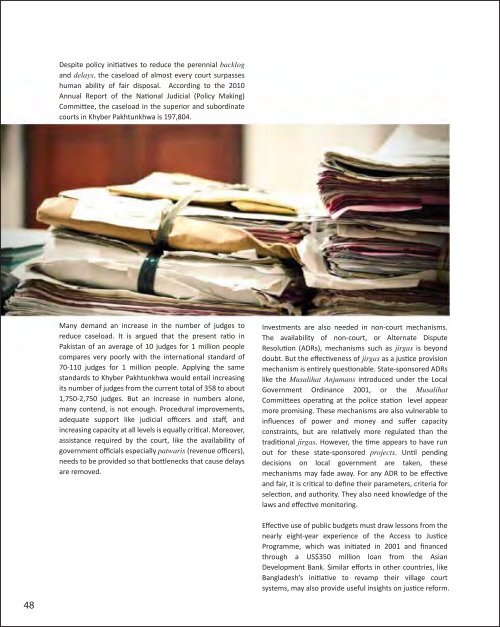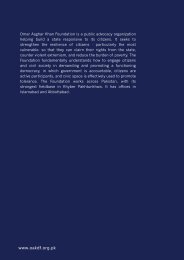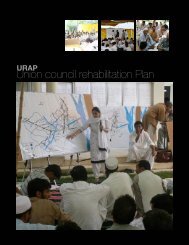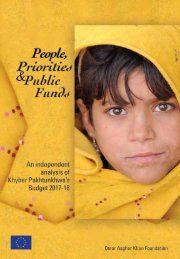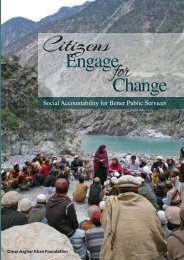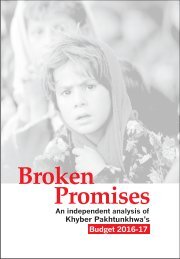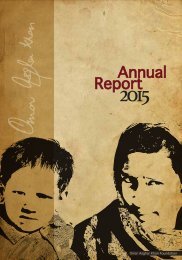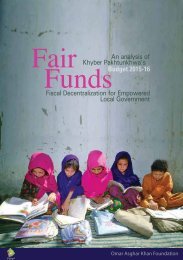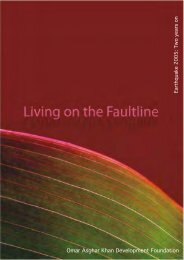Justice Denied
You also want an ePaper? Increase the reach of your titles
YUMPU automatically turns print PDFs into web optimized ePapers that Google loves.
Despite policy initiatives to reduce the perennial backlog<br />
and delays, the caseload of almost every court surpasses<br />
human ability of fair disposal. According to the 2010<br />
Annual Report of the National Judicial (Policy Making)<br />
Committee, the caseload in the superior and subordinate<br />
courts in Khyber Pakhtunkhwa is 197,804.<br />
Many demand an increase in the number of judges to<br />
reduce caseload. It is argued that the present ratio in<br />
Pakistan of an average of 10 judges for 1 million people<br />
compares very poorly with the international standard of<br />
70-110 judges for 1 million people. Applying the same<br />
standards to Khyber Pakhtunkhwa would entail increasing<br />
its number of judges from the current total of 358 to about<br />
1,750-2,750 judges. But an increase in numbers alone,<br />
many contend, is not enough. Procedural improvements,<br />
adequate support like judicial officers and staff, and<br />
increasing capacity at all levels is equally critical. Moreover,<br />
assistance required by the court, like the availability of<br />
government officials especially patwaris (revenue officers),<br />
needs to be provided so that bottlenecks that cause delays<br />
are removed.<br />
Investments are also needed in non-court mechanisms.<br />
The availability of non-court, or Alternate Dispute<br />
Resolution (ADRs), mechanisms such as jirgas is beyond<br />
doubt. But the effectiveness of jirgas as a justice provision<br />
mechanism is entirely questionable. State-sponsored ADRs<br />
like the Musalihat Anjumans introduced under the Local<br />
Government Ordinance 2001, or the Musalihat<br />
Committees operating at the police station level appear<br />
more promising. These mechanisms are also vulnerable to<br />
influences of power and money and suffer capacity<br />
constraints, but are relatively more regulated than the<br />
traditional jirgas. However, the time appears to have run<br />
out for these state-sponsored projects. Until pending<br />
decisions on local government are taken, these<br />
mechanisms may fade away. For any ADR to be effective<br />
and fair, it is critical to define their parameters, criteria for<br />
selection, and authority. They also need knowledge of the<br />
laws and effective monitoring.<br />
48<br />
Effective use of public budgets must draw lessons from the<br />
nearly eight-year experience of the Access to <strong>Justice</strong><br />
Programme, which was initiated in 2001 and financed<br />
through a US$350 million loan from the Asian<br />
Development Bank. Similar efforts in other countries, like<br />
Bangladesh’s initiative to revamp their village court<br />
systems, may also provide useful insights on justice reform.


